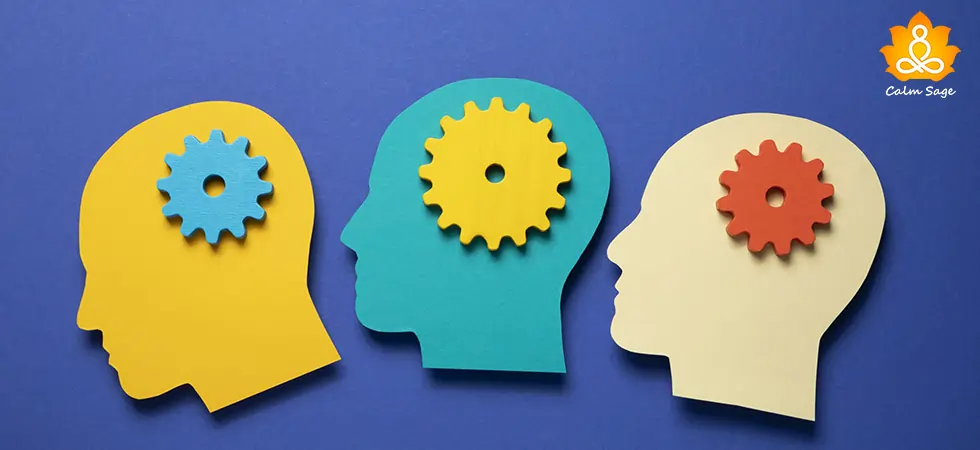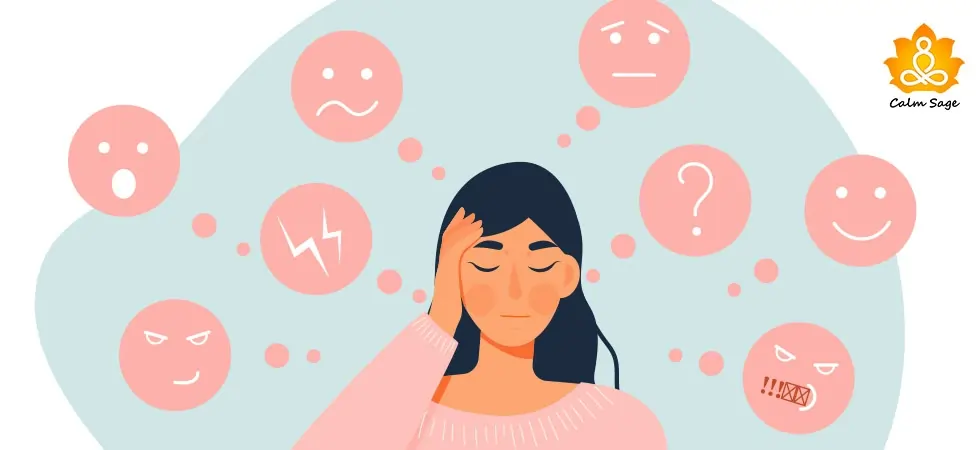Understanding Identity Disturbance: A Complicated Symptom Of BPD

We all go through an identity crisis at one point or another, but did you know that not having a stable sense of identity for long can be a struggle for people living with BPD?
This unstable sense of identity or sense of self can be called “Identity Disturbance” and is one of the most complicated symptoms of borderline personality disorder (BPD).
Not only people with BPD but people without the disorder might also struggle with identity disturbance. However, people with BPD have a very intense lack of self.
In simple words, identity disturbance can be described as an inconsistent sense of self or identity which can also mean that an individual’s goals, behaviors, and beliefs are always changing.
Let’s learn more about identity disturbance, its signs, and how you can find yourself once again.
Why Is Sense Of Identity Important?
Identity can be defined as, “the fact of being who or what a person or thing is”. All in all, having a stable sense of identity means that you see yourself as the same person as you did in the past and as you will eventually, no matter how your situation changes in the future.
This word, “identity” includes many aspects of yourself. It includes your beliefs, your view of your abilities, your behaviors, your personality, and even your opinions. Identity is a term that glues all of these above aspects together.
Having a stable sense of identity means that you’re capable of adapting to changes, even when the world is constantly changing. This sense of self helps you stay true to yourself even while you adapt to the changing world. And if you lose the sense of identity, everything around you becomes chaotic.
A strong sense of self or identity means you have good self-esteem, but if you lose that or have an unstable sense of self, then you may falter when it comes to self-esteem and even self-respect.
The Signs To Look Out For
Identity disturbance, often referred to as identity diffusion, makes it harder to understand who you are and who the other person is concerning you. People with BPD might not have any clue who they are and what their beliefs are and may even feel nonexistent. Others with the same symptoms might change their identity depending on their situation or what they need from others.
Here, take this example. You might find yourself at the center of attention at a party but then have a serious attitude in a professional setting. Many people with BPD and identity disturbance also experience a change in thoughts and feelings along with behaviors.
You may also quickly change your mind about;
- Career
- Friendships
- Aspirations
- Opinions
- Beliefs, and
- Other life decisions
If you’re struggling with BPD, then you may also struggle with maintaining healthy personal boundaries and might also have trouble with intimate relationships. Those with identity disturbance might also find their mood changing unpredictably.
What Causes Identity Disturbance In BPD?
There is limited research on why identity disturbance happens, but there are also theories about why people with BPD struggle with an unstable sense of identity. A borderline personality disorder is often linked with emotional instability, impulsivity, and distorted thinking. All these factors can make it harder for an individual to form a stable identity.
It is also found that many people with BPD come from toxic backgrounds and this may contribute to an unstable sense of identity. If you base your identity on others’ reactions to you then it’s likely that you may develop an unstable sense of self.
How To Find Your Identity?
Many treatment options for BPD can include different approaches to psychotherapy. Now, to find the answer to, “Who Am I?”, there are some things you can do. First, you can find a therapist who can help you work on your identity problems.
Here are some approaches to psychotherapy that can help you find your sense of identity again;
1. Cognitive-Behavioral Therapy (CBT): This therapy can help you identify negative or self-limiting thoughts and replace them with healthy ones. It can also help address any underlying disorders that might be contributing to this crisis.
2. Dialectical Behavior Therapy (DBT): This helps you cope with intense emotions and manage your destructive behaviors.
3. Mentalization-Based Therapy (MBT): Here, a therapist helps you improve your interpersonal skills and aims to strengthen your understanding of what or who you are.
4. Transference-Focused Psychotherapy (TFP): In this therapy, you explore the different aspects of your identity disturbance. This allows the therapist to help the integration of different aspects of yourself.
5. Schema-Focused Therapy (SFT): A variety of psychotherapeutic techniques are introduced to try and help you change self-destructive patterns that might be contributing to your unstable sense of identity.
Other than this, you can engage in self-help ways by discovering what is meaningful to you in your life. Your self-discovery journey might help you work on your sense of self along with therapy.
When you know what’s important and meaningful to you, you can find it easier to connect with yourself. You can also try expressive arts therapy to find out more about yourself.
Final Words
All of us struggle with identity crises or identity issues of some sort in our lives, but not more so than people living with a borderline personality disorder. If you’re struggling with identity disturbance, then finding out what holds meaning in your life can be a good start.
If that doesn’t help, you can always reach out to a professional mental health provider and seek the right diagnosis and treatment. With the right help and support, you can cure identity disturbance, one of the most complicated symptoms of BPD.
I hope this article helped. For more, you can write to us at info@calmsage.com or DM us on social media. You can also share your thoughts in the comments below.
Take Care!




















